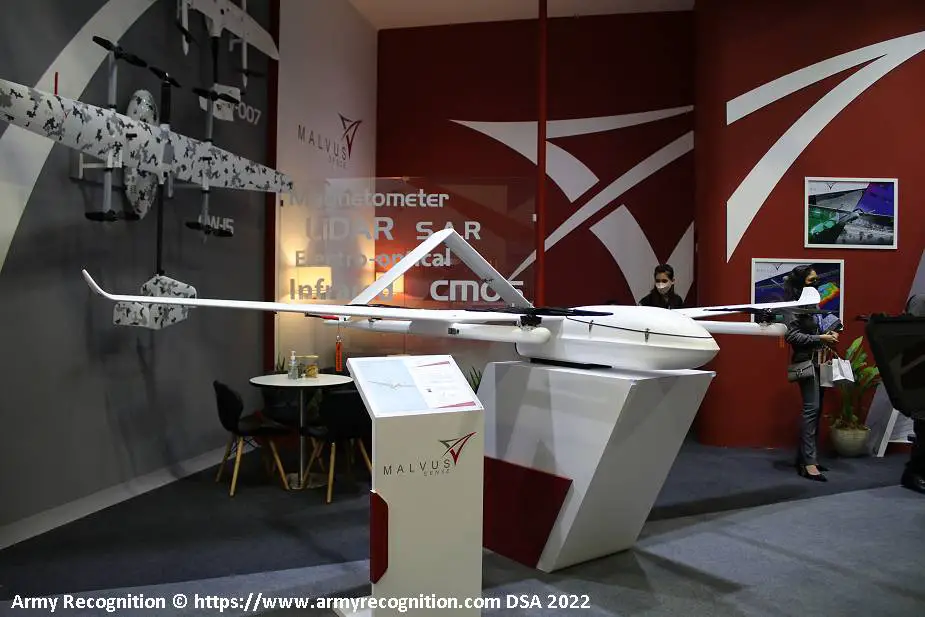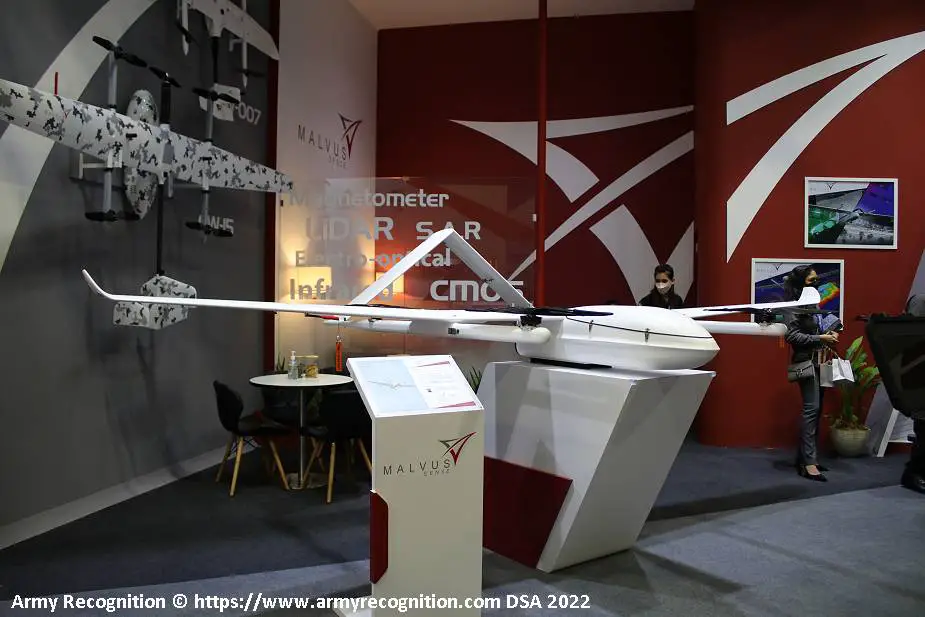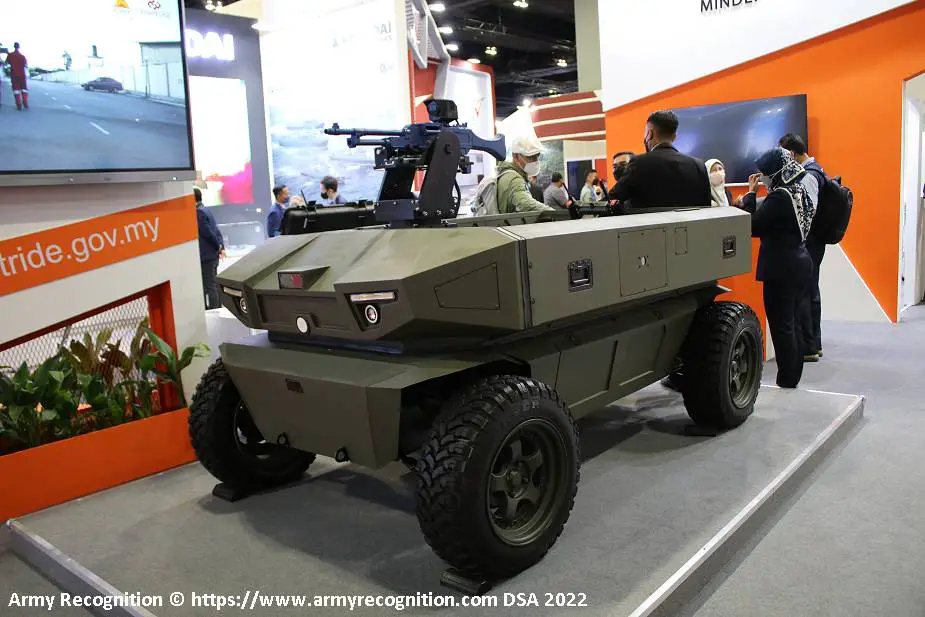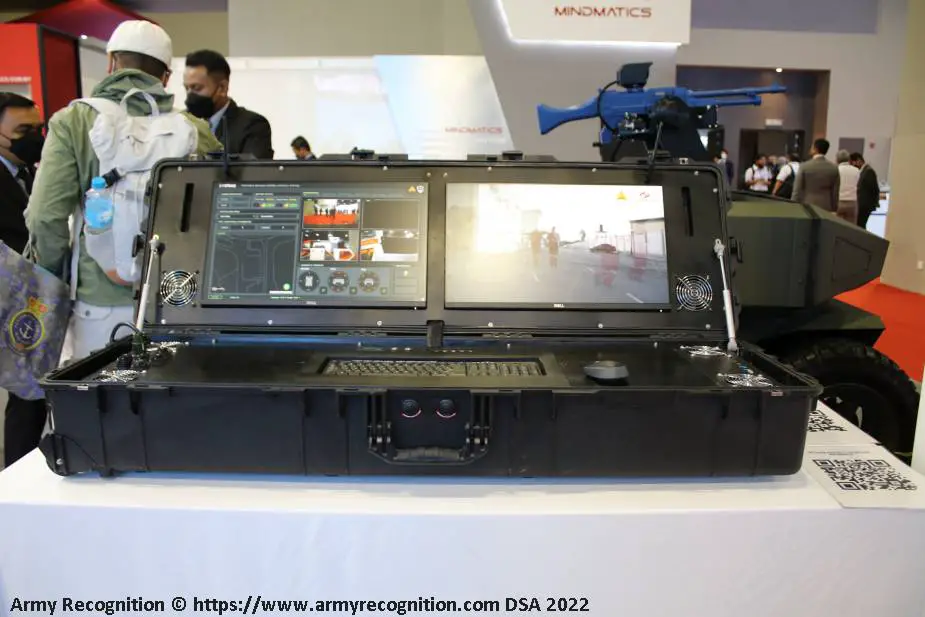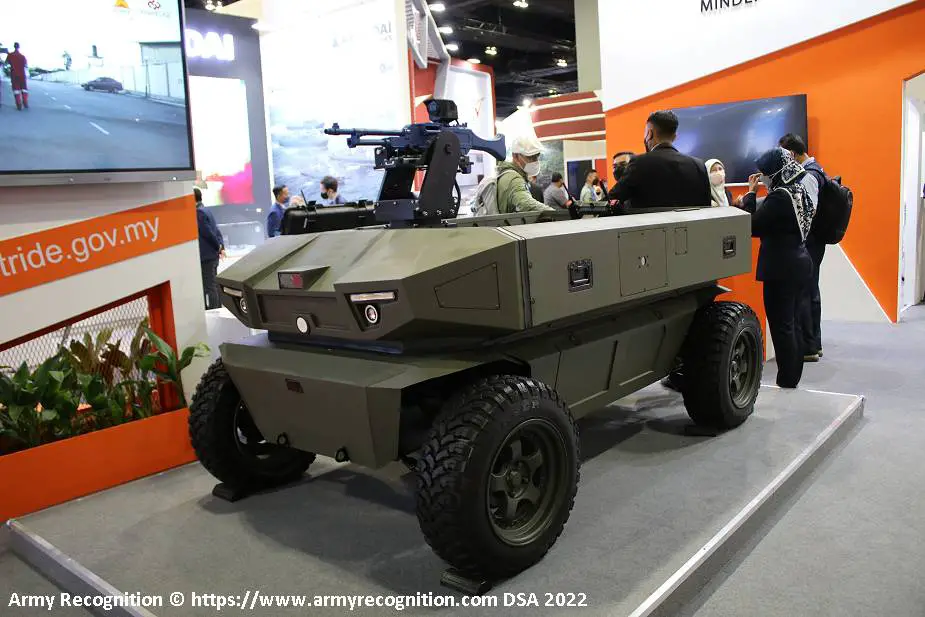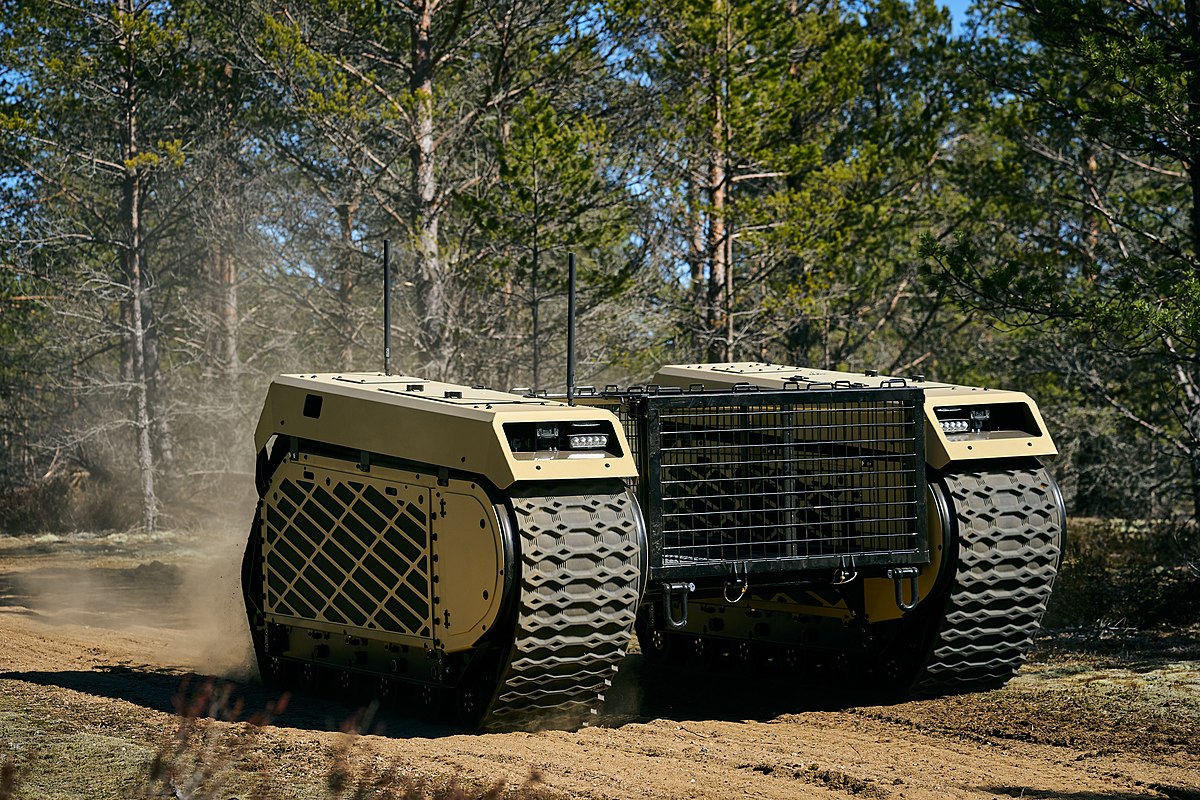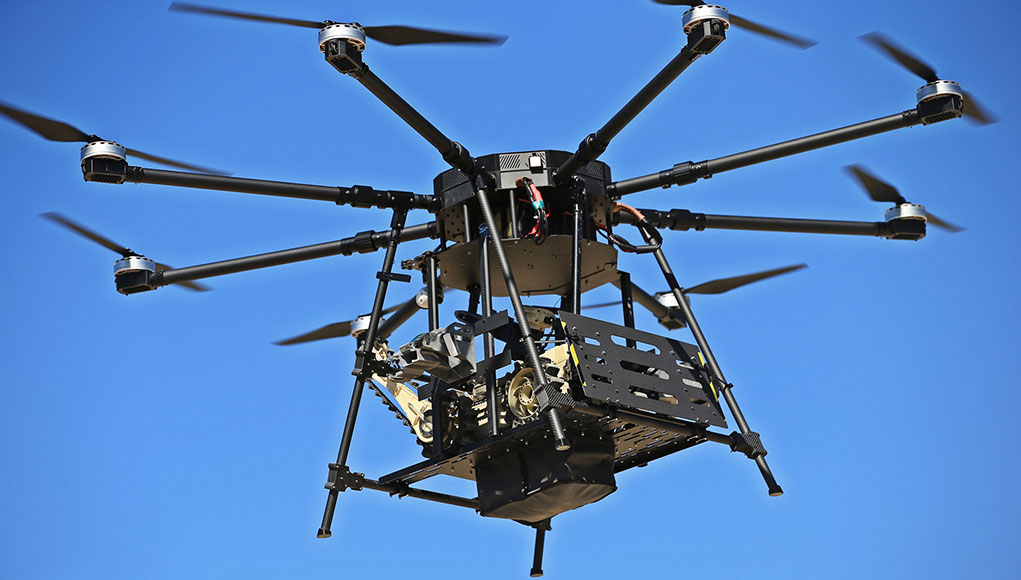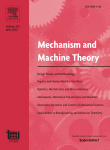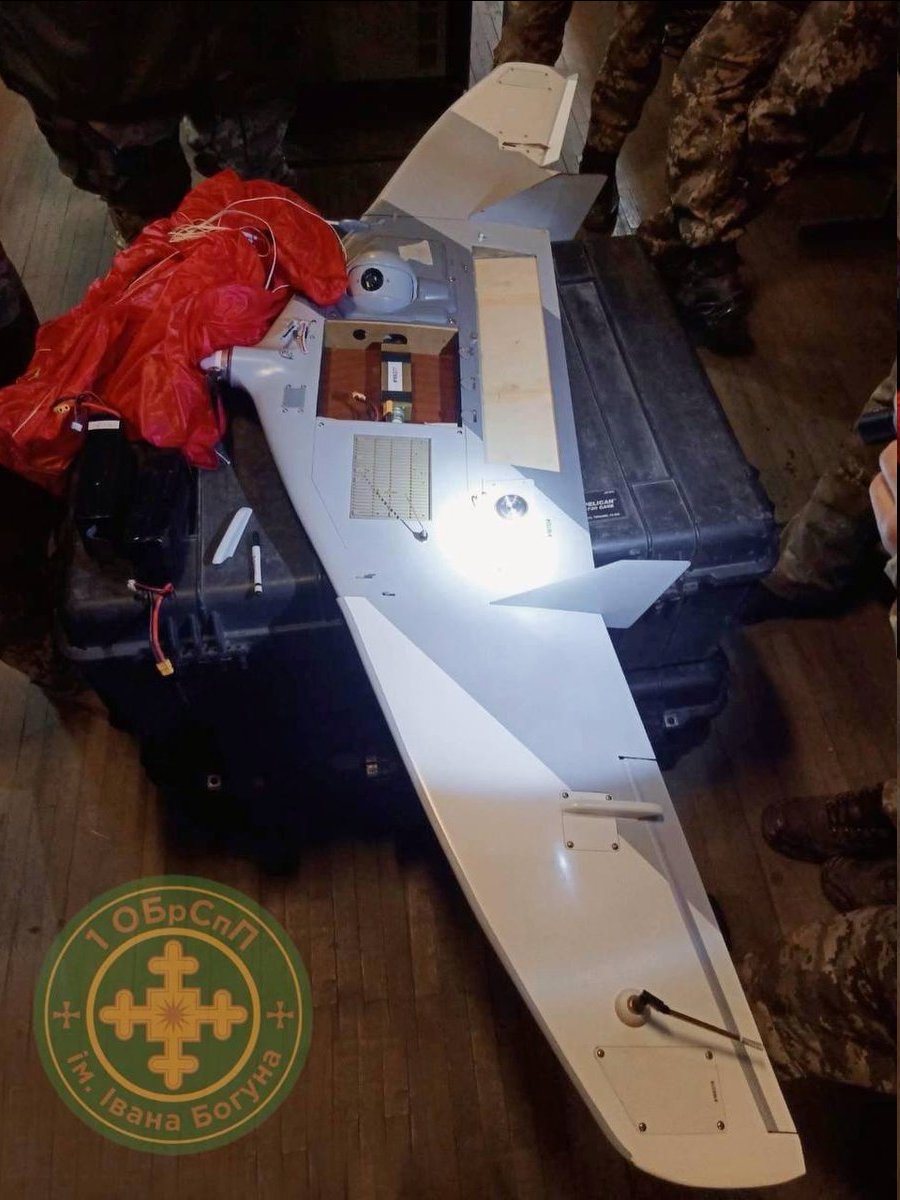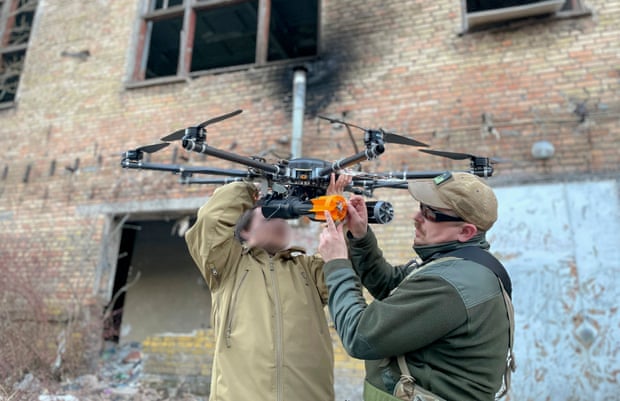
The drone operators were drawn from an air reconnaissance unit, Aerorozvidka, which began eight years ago as a group of volunteer IT specialists and hobbyists designing their own machines and has evolved into an essential element in Ukraine’s successful David-and-Goliath resistance.
However, while Ukraine’s western backers have supplied thousands of anti-tank and anti-aircraft missiles and other military equipment, Aerorozvidka has been forced to resort to crowdfunding and a network of personal contacts in order to keep going, by getting hold of components such as advanced modems and thermal imaging cameras, in the face of export controls that prohibit them being sent to Ukraine.
The unit’s commander, Lt Col Yaroslav Honchar, gave an account of the ambush near the town of Ivankiv that helped stop the vast, lumbering Russian offensive in its tracks. He said the Ukrainian fighters on quad bikes were able to approach the advancing Russian column at night by riding through the forest on either side of the road leading south towards Kyiv from the direction of Chernobyl.
The Ukrainian soldiers were equipped with night vision goggles, sniper rifles, remotely detonated mines, drones equipped with thermal imaging cameras and others capable of dropping small 1.5kg bombs.
“This one little unit in the night destroyed two or three vehicles at the head of this convoy, and after that it was stuck. They stayed there two more nights, and [destroyed] many vehicles,” Honchar said.

The drone operators who halted Russian convoy headed for Kyiv
Special IT force of 30 soldiers on quad bikes is vital part of Ukraine’s defence, but forced to crowdfund for supplies
The unit was started by young university-educated Ukrainians who had been part of the 2014 Maidan uprising and volunteered to use their technical skills in the resistance against the first Russian invasion in Crimea and the Donbas region. Its founder, Volodymyr Kochetkov-Sukach, was an investment banker who was killed in action in 2015 in Donbas – a reminder of the high risks involved. The Russians can latch on to the drone’s electronic signature and quickly strike with mortars, so the Aerorozvidka teams have to launch and run.
Honchar is an ex-soldier turned IT marketing consultant, who returned to the army after the first Russian invasion. Taras, who asked not to use his surname, was a management consultant, who specialised in fundraising for the unit and only joined full-time as a combatant in February.
In its early days, the unit used commercial surveillance drones, but its team of engineers, software designers and drone enthusiasts later developed their own designs.
They built a range of surveillance drones, as well as large 1.5-metre eight-rotor machines capable of dropping bombs and rocket-propelled anti-tank grenades, and created a system called Delta, a network of sensors along the frontlines that fed into a digital map so commanders could see enemy movements as they happened. It now uses the Starlink satellite system, supplied by Elon Musk, to feed live data to Ukrainian artillery units, allowing them to zero in on Russian targets.
The unit was disbanded in 2019 by the then defence minister, but it was hastily revived in October last year as the Russian invasion threat loomed.
The unit is also looking at ways to overcome Russian jamming, part of the electronic warfare being waged in Ukraine in parallel to the bombs, shells and missiles. At present, Aerorozvidka typically waits for the Russians turn off their jamming equipment to launch their own drones, and then it sends up its machines at the same time. The unit then concentrates its firepower on the electronic warfare vehicles.
Honchar describes these technological battles, and Aerorozvidka’s way of fighting, as the future of warfare, in which swarms of small teams networked together by mutual trust and advanced communications can overwhelm a bigger and more heavily armed adversary.
“We are like a hive of bees,” he said. “One bee is nothing, but if you are faced with a thousand, it can defeat a big force. We are like bees, but we work at night.”

